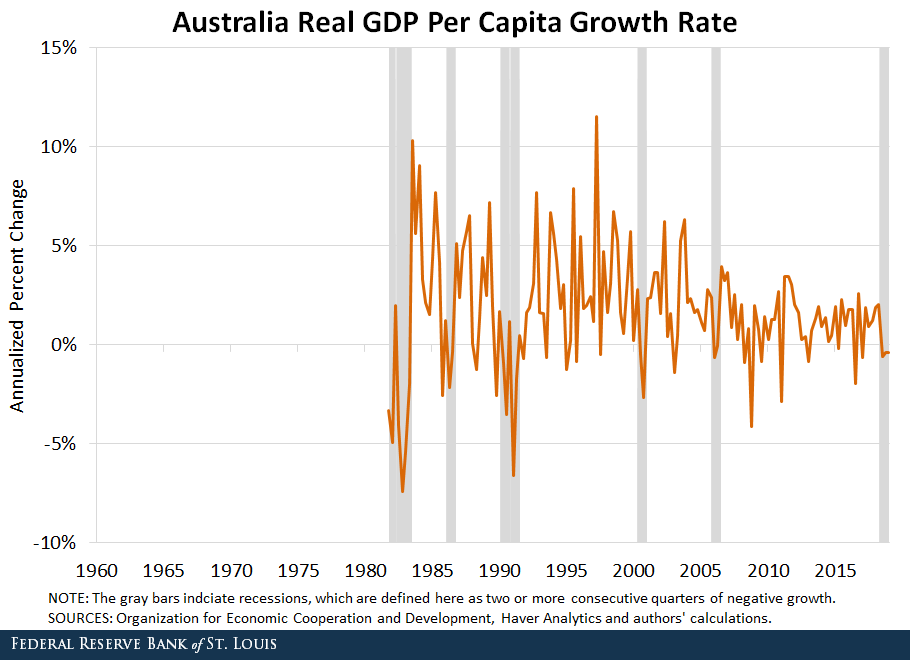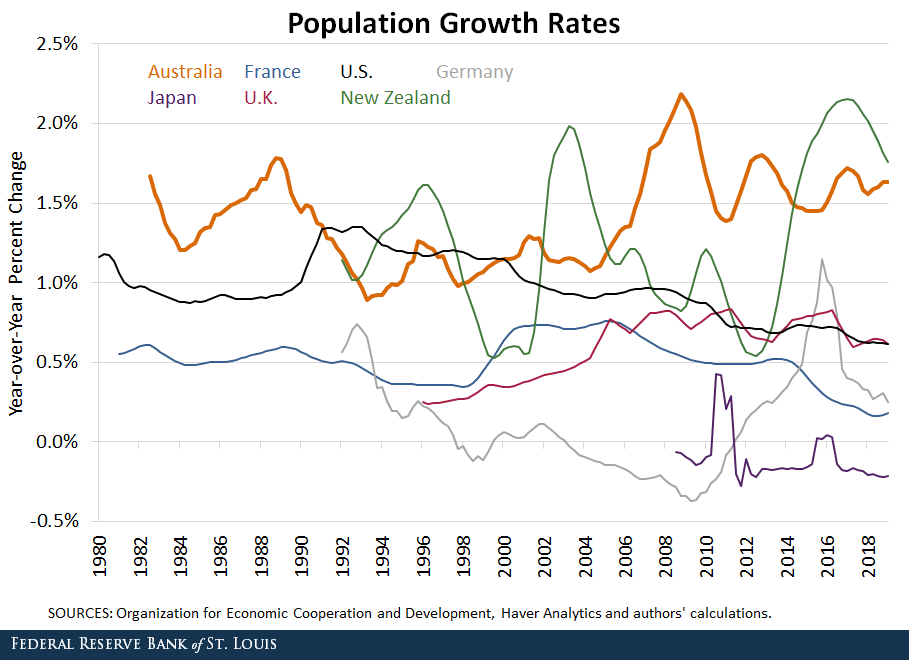Interesting article from The St. Louis Fed “On The Economy” blog titled “Has Australia Really Had a 28-Year Expansion?” Should we use Australia as a benchmark when thinking about possible duration of expansions?
They conclude we have to take it with a grain of salt because looking at just GDP growth doesn’t paint the whole picture. It is important to look at per capita GDP growth to have a broader view.
Their thesis is simple. We have had a long period of growth, thanks to very high population expansion. On a per capita basis, we have had 3 recessions!

Recessions are shaded gray and defined as two or more consecutive quarters of negative growth.
As shown in the figure, Australia has had three recessions since 1991 when looking at GDP per capita, the most recent one being from the second quarter of 2018 to the first quarter of 2019.
This discrepancy between the growth rate of per capita GDP and the growth rate of GDP implies that population growth has been a key factor for Australia’s economic expansion. A rising population increases the size of the economy, and therefore total output increases, which is reflected in the level of GDP.
However, the fact that we do see economic downturns in per capita terms means that population is growing faster than GDP. For nearly 40 years, Australia has had a higher population growth rate than other industrialized economies.

In particular, it had a surge in population around 2008—during the height of the global financial crisis—due to migration. This population growth translated to overall positive GDP growth, but its effect on GDP growth hasn’t been enough to prevent recessions in per capita terms.
